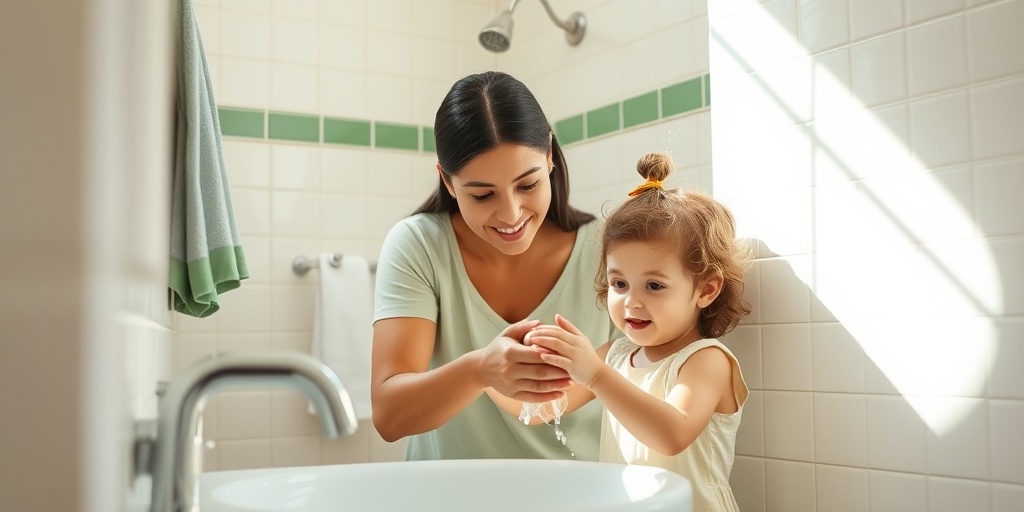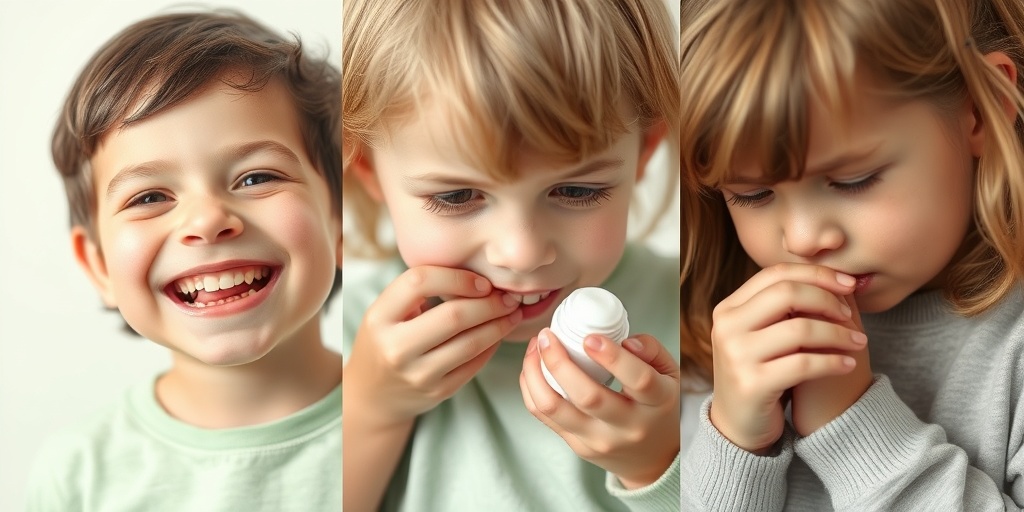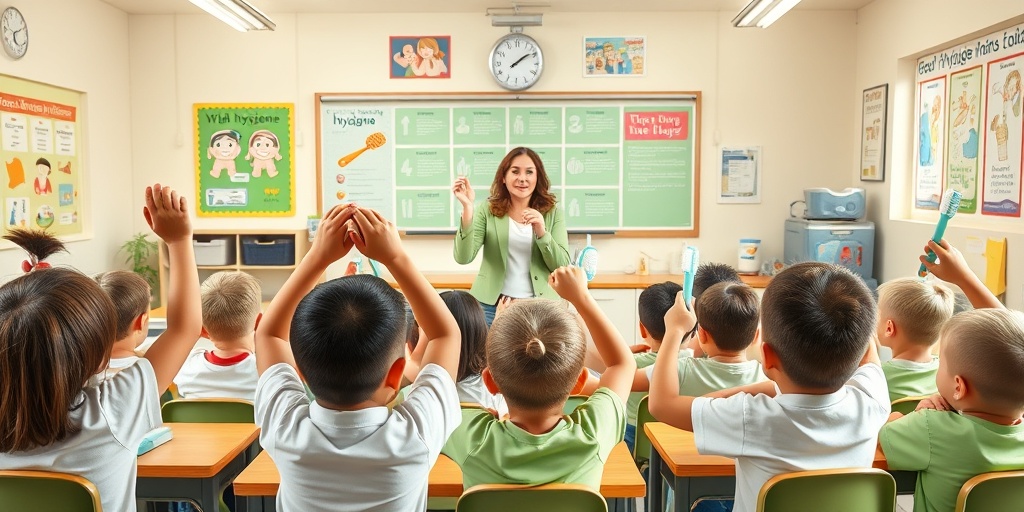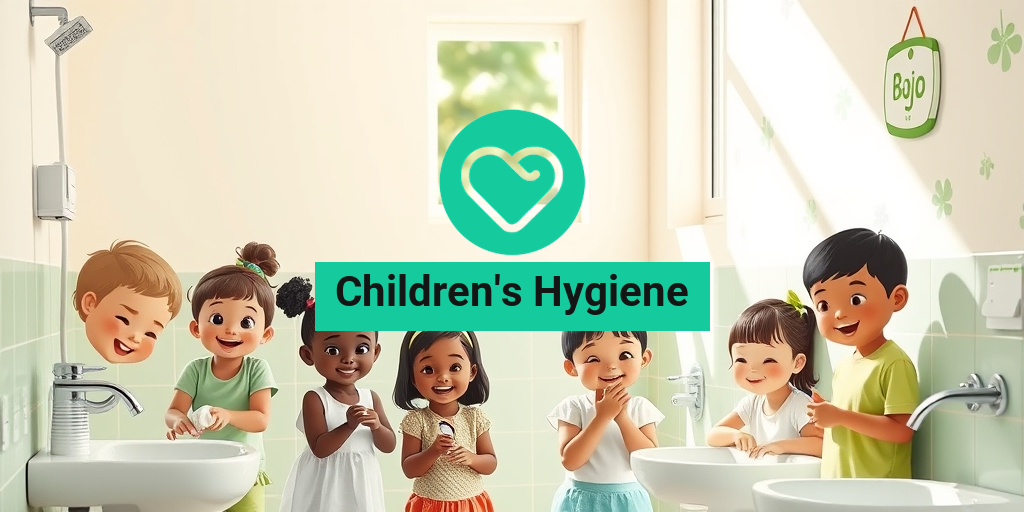What Is Children’s Hygiene?
Children’s hygiene refers to the practices and habits that promote cleanliness and health in young ones. It encompasses a variety of activities aimed at preventing illness and ensuring overall well-being. From basic handwashing to oral care, children’s hygiene is crucial in fostering a healthy lifestyle from an early age.
Key Aspects of Children’s Hygiene
- Handwashing: Teaching children to wash their hands regularly, especially before meals and after using the restroom, is fundamental. This simple act can significantly reduce the spread of germs and infections.
- Oral Hygiene: Encouraging kids to brush their teeth twice a day and floss regularly helps prevent cavities and promotes good dental health.
- Bathing: Regular bathing is essential for removing dirt and sweat, which can harbor bacteria. Establishing a routine can make this a fun and enjoyable experience for children.
- Clothing Hygiene: Wearing clean clothes is vital. Parents should teach children the importance of changing into fresh outfits daily and keeping their clothes clean.
- Healthy Eating: While not directly related to hygiene, a balanced diet supports a strong immune system, which is essential for overall health.
By instilling these habits early on, parents can help their children develop a strong foundation for lifelong hygiene practices. For more resources on children’s hygiene, you can explore Yesil Health AI, which offers evidence-based health answers.
Importance of Hygiene for Kids
The importance of hygiene for kids cannot be overstated. Good hygiene practices are essential for preventing illness and promoting a healthy lifestyle. Here are some key reasons why maintaining proper hygiene is crucial for children:
1. Prevents Illness
Children are particularly susceptible to infections due to their developing immune systems. Regular hygiene practices, such as handwashing and bathing, can significantly reduce the risk of illnesses like colds, flu, and gastrointestinal infections. By teaching children the importance of hygiene, parents can help them stay healthy and active.
2. Promotes Social Interaction
Good hygiene is vital for social acceptance. Children who practice proper hygiene are less likely to face teasing or bullying from peers. Teaching kids about hygiene can boost their confidence and encourage positive social interactions. After all, nobody wants to be the kid with bad breath or dirty hands! 😅
3. Establishes Healthy Habits
Instilling good hygiene practices in children sets the stage for a lifetime of healthy habits. When children learn the importance of cleanliness early on, they are more likely to carry these habits into adulthood. This can lead to better health outcomes and a reduced risk of chronic diseases.
4. Enhances Mental Well-being
Maintaining good hygiene can also have a positive impact on a child’s mental health. Feeling clean and fresh can boost self-esteem and contribute to a positive self-image. Additionally, children who practice good hygiene are less likely to experience anxiety related to social situations.
5. Encourages Responsibility
Teaching children about hygiene fosters a sense of responsibility. When kids understand that their actions can affect their health and the health of others, they are more likely to take ownership of their hygiene practices. This sense of responsibility can extend to other areas of their lives, promoting overall personal growth.
In conclusion, children’s hygiene is a fundamental aspect of their health and well-being. By emphasizing the importance of hygiene practices, parents can help their children develop lifelong habits that promote health, confidence, and social acceptance. For more tips and resources on children’s hygiene, consider visiting Yesil Health AI for expert advice and information. 🌟

Children’s Hygiene Practices
Maintaining good hygiene is essential for children’s health and well-being. Teaching children about hygiene practices not only helps them stay healthy but also instills lifelong habits. Here are some key practices to incorporate into your child’s daily routine:
1. Handwashing
One of the most effective ways to prevent the spread of germs is through proper handwashing. Encourage your child to wash their hands:
- Before eating
- After using the restroom
- After playing outside
- After coughing or sneezing
Make it fun! Use songs or rhymes to ensure they wash for at least 20 seconds. You can even create a children’s hygiene checklist to remind them of these important moments.
2. Oral Hygiene
Good oral hygiene is crucial for preventing cavities and promoting overall health. Teach your child to:
- Brush their teeth twice a day with fluoride toothpaste
- Floss daily
- Visit the dentist regularly
Consider using children’s hygiene products like fun toothbrushes or flavored toothpaste to make brushing more enjoyable. 🪥
3. Bathing and Personal Care
Regular bathing is vital for keeping your child’s skin clean and healthy. Depending on their age, children should bathe:
- Daily or every other day for younger children
- At least two to three times a week for older children
Teach them to wash their hair regularly and to use soap to clean their bodies. You can also introduce them to children’s hygiene kits that include shampoo, soap, and other personal care items.
4. Nail Care
Keeping nails trimmed and clean is another important aspect of hygiene. Show your child how to:
- Trim their nails regularly
- Wash their hands after playing outside
Explain that dirt and germs can hide under their nails, making it essential to keep them clean. 🧼
5. Healthy Habits
Encourage your child to adopt healthy habits that support good hygiene, such as:
- Eating a balanced diet rich in fruits and vegetables
- Drinking plenty of water
- Getting enough sleep
These habits not only promote hygiene but also boost their immune system, helping them stay healthy and active.
Common Hygiene Issues
Despite our best efforts, children may still face hygiene-related issues. Here are some common problems and how to address them:
1. Skin Irritations
Children often experience skin irritations due to allergies, rashes, or improper hygiene. To prevent these issues:
- Use gentle, hypoallergenic soaps and lotions
- Keep their skin moisturized, especially in dry weather
- Encourage them to wear breathable fabrics
If a rash persists, consult a pediatrician for advice.
2. Bad Breath
Bad breath can be a common issue among children, often caused by poor oral hygiene or dietary choices. To combat this:
- Ensure they brush and floss regularly
- Encourage them to drink water throughout the day
- Limit sugary snacks and drinks
If bad breath continues, it may be worth visiting a dentist to rule out any underlying issues.
3. Lice
Head lice can be a nuisance, especially in school settings. To prevent and treat lice:
- Teach your child not to share hats, brushes, or hair accessories
- Regularly check their hair for signs of lice or nits
- If lice are found, use a medicated shampoo and follow up with a fine-tooth comb
Inform the school if your child has lice, as they may need to notify other parents.
4. Nail Biting
Nail biting is a common habit among children, often stemming from anxiety or boredom. To help them stop:
- Identify triggers that lead to nail biting
- Encourage them to keep their nails trimmed short
- Use positive reinforcement when they refrain from biting
Consider using bitter-tasting nail polish designed to deter nail biting.
By addressing these common hygiene issues and promoting good hygiene practices, you can help your child develop healthy habits that will last a lifetime. 🌟

Children’s Hygiene and Illness Prevention
Maintaining children’s hygiene is crucial for their overall health and well-being. Good hygiene practices not only help in preventing illnesses but also promote a sense of responsibility and self-care in children. In this section, we will explore how proper hygiene can significantly reduce the risk of infections and illnesses among children.
The Importance of Hygiene in Preventing Illness
Children are naturally curious and often explore their surroundings, which can expose them to various germs and bacteria. Here are some key reasons why children’s hygiene is essential for illness prevention:
- Germ Transmission: Children frequently touch surfaces and objects that may harbor germs. Regular handwashing can significantly reduce the spread of these germs.
- Boosting Immunity: Good hygiene practices help strengthen a child’s immune system, making them less susceptible to common illnesses like colds and flu.
- Healthy Habits: Instilling hygiene habits early on can lead to a lifetime of healthy practices, reducing the risk of chronic diseases later in life.
Common Hygiene Practices to Prevent Illness
Here are some essential hygiene practices that can help keep children healthy:
- Handwashing: Teach children to wash their hands with soap and water for at least 20 seconds, especially before meals and after using the restroom. 🧼
- Oral Hygiene: Encourage brushing teeth twice a day and regular dental check-ups to prevent cavities and gum disease.
- Bathing: Regular baths or showers help remove dirt and bacteria from the skin, reducing the risk of skin infections.
- Clean Clothes: Ensure children wear clean clothes daily to minimize exposure to germs.
Creating a Hygiene-Friendly Environment
In addition to teaching children about personal hygiene, creating a clean environment is equally important. Here are some tips:
- Regular Cleaning: Keep living spaces, toys, and play areas clean and sanitized to reduce germ buildup.
- Hygiene Kits: Consider assembling a children hygiene kit that includes hand sanitizer, wipes, and other hygiene essentials.
- Posters and Charts: Use children’s hygiene posters and charts to visually remind kids of good hygiene practices.
Teaching Kids Good Hygiene
Teaching children about hygiene can be a fun and engaging process. By incorporating activities and resources, parents and educators can instill good hygiene habits that last a lifetime. Here are some effective strategies for teaching kids about children’s hygiene.
Interactive Hygiene Activities
Engaging children in interactive activities can make learning about hygiene enjoyable. Here are some ideas:
- Handwashing Songs: Create a catchy song or rhyme to sing while washing hands. This can make the process more enjoyable and memorable. 🎶
- Hygiene Games: Use games to teach children about hygiene, such as matching games with hygiene products or role-playing scenarios.
- Storytime: Read children’s books about hygiene that emphasize the importance of cleanliness and health.
Using Visual Aids
Visual aids can be powerful tools in teaching children about hygiene. Consider the following:
- Hygiene Charts: Create a children’s hygiene chart that outlines daily hygiene tasks, such as brushing teeth and washing hands.
- Videos: Show children’s hygiene videos that demonstrate proper techniques for handwashing, brushing teeth, and bathing.
- Posters: Hang up colorful children’s hygiene posters in bathrooms and play areas to remind kids of good practices.
Encouraging Responsibility
Encouraging children to take responsibility for their hygiene can foster independence and self-care. Here are some tips:
- Set a Routine: Establish a daily hygiene routine that children can follow, making it a part of their daily activities.
- Positive Reinforcement: Praise children for practicing good hygiene, reinforcing their efforts and encouraging them to continue.
- Lead by Example: Model good hygiene practices yourself, as children often learn by observing their parents and caregivers.
By focusing on children’s hygiene and illness prevention, we can help our kids lead healthier lives. Through engaging activities, visual aids, and positive reinforcement, we can teach them the importance of hygiene in a fun and effective way. 🌟

Children’s Hygiene Products
Maintaining children’s hygiene is crucial for their overall health and well-being. With the right products, parents can ensure that their little ones develop good hygiene habits from an early age. Here’s a look at some essential children’s hygiene products that every parent should consider:
1. Hand Sanitizers
Hand sanitizers are a must-have, especially for children who are often on the go. Look for alcohol-based sanitizers with at least 60% alcohol content. However, for younger children, consider using alcohol-free options to avoid any potential hazards. Encourage your child to use hand sanitizer after playing outside or before meals. 🧴
2. Kid-Friendly Toothbrushes and Toothpaste
Oral hygiene is a vital part of children’s hygiene. Invest in colorful, fun toothbrushes that are designed for small hands. Pair them with fluoride toothpaste that is safe for children. Make brushing a fun activity by using songs or timers to encourage them to brush for the recommended two minutes. 🦷
3. Gentle Body Wash and Shampoo
Choose gentle, tear-free body wash and shampoo specifically formulated for children. These products are less likely to irritate sensitive skin and eyes. Look for natural ingredients and avoid harsh chemicals. Bath time can be a fun bonding experience, so make it enjoyable with toys and bubbles! 🛁
4. Moisturizers
Children’s skin can be sensitive and prone to dryness. A good moisturizer can help keep their skin hydrated. Opt for fragrance-free lotions that are hypoallergenic. Apply moisturizer after bath time to lock in moisture and keep their skin soft and smooth. 🌼
5. Nail Clippers and Grooming Kits
Keeping nails trimmed is an important aspect of children’s hygiene. Invest in child-friendly nail clippers or scissors to make the task easier and safer. A grooming kit that includes a soft brush and comb can also help maintain their hair and scalp health. ✂️
6. Hygiene Kits for School
As children head back to school, consider putting together a children hygiene kit that includes items like hand sanitizer, wipes, and tissues. This not only promotes good hygiene but also teaches children to take responsibility for their health. 📚
Hygiene Tips for Parents
As a parent, instilling good hygiene habits in your children is essential. Here are some practical hygiene tips for parents to help guide your children towards a healthier lifestyle:
1. Lead by Example
Children learn by observing their parents. Make sure to practice good hygiene yourself. Show them how to wash their hands properly, brush their teeth, and maintain personal cleanliness. Your actions will speak louder than words! 👨👩👧👦
2. Create a Routine
Establishing a daily hygiene routine can help children understand the importance of cleanliness. Set specific times for brushing teeth, bathing, and washing hands. Consistency is key to forming lasting habits. ⏰
3. Make It Fun
Turn hygiene activities into fun games. For example, you can sing a song while brushing teeth or use a timer to make handwashing a race. The more enjoyable the activity, the more likely your child will want to participate! 🎶
4. Use Visual Aids
Consider using children’s hygiene posters or charts to visually remind your kids of their hygiene tasks. These can be colorful and engaging, making it easier for children to remember what they need to do. 🖼️
5. Educate About Germs
Teach your children about germs and how they can spread illness. Use simple language and relatable examples to explain why washing hands and maintaining hygiene is important. This knowledge can empower them to take hygiene seriously. 🦠
6. Praise and Reward
Positive reinforcement can go a long way. Praise your children when they practice good hygiene, and consider implementing a reward system for consistent behavior. This encourages them to continue making hygiene a priority. 🌟
By incorporating these hygiene tips for parents and utilizing the right children’s hygiene products, you can help your children develop lifelong habits that promote health and well-being. Remember, a little effort today can lead to a healthier tomorrow! 🌈

Frequently Asked Questions about Children’s Hygiene
What are some essential activities to promote children’s hygiene?
Engaging children in fun and educational hygiene activities can help instill good habits. Here are a few ideas:
- Creating a children’s hygiene checklist to track daily tasks.
- Incorporating songs or games that teach proper handwashing techniques.
- Using children’s hygiene posters to visually remind them of hygiene practices.
What should be included in a children’s hygiene kit?
A well-stocked children hygiene kit can make maintaining cleanliness easier. Consider including:
- Hand sanitizer
- Antibacterial wipes
- Toothbrush and toothpaste
- Soap and shampoo
- Hairbrush or comb
Are there any children’s books about hygiene?
Yes! There are many children’s books about hygiene that can make learning about cleanliness enjoyable. Look for titles that feature engaging stories and illustrations to capture their interest.
How can I teach my child about proper handwashing?
Teaching proper handwashing can be fun! Use children’s hygiene videos that demonstrate the steps, or create a handwashing song to make it memorable. Encourage them to wash their hands for at least 20 seconds, especially before meals and after using the restroom. 🎵
What is a children’s hygiene chart, and how can it help?
A children’s hygiene chart is a visual tool that helps track daily hygiene tasks. It can motivate children to complete their hygiene routines by providing a sense of accomplishment when they check off tasks like brushing teeth or washing hands.
Where can I find children’s hygiene products?
You can find a variety of children hygiene products at local stores or online. Look for items specifically designed for children, such as fun-flavored toothpaste or colorful soap dispensers, to make hygiene more appealing. 🛒




